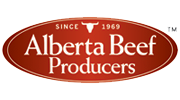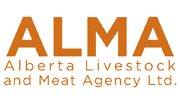Identifying Efficient Cattle Using Infrared Technology
| Project Code: | 0007-126 |
| Completed: | July 2010 |
Project Title:
Growth Efficiency Screening: 1. Cow Herd Applications. 2. Feedlot Applications.
Researchers:
Dr. A.L. Schaefer
A.L. Schaefer, PhD (Agriculture and Agri-Food Canada Lacombe), John Basarab, PhD (Alberta Agriculture and Rural Development), Shannon Scott (Agriculture and Agri-Food Canada, Brandon), GrowSafe Systems, Ltd. (Airdrie, AB).
Winter feed costs can account for up to 75% of operating costs in a cow-calf operation, and can exceed 60% of overall beef production costs. Although appropriate herd health and feed management can improve efficiency, genetics still influence how effective these tools will be in each animal. It would be very beneficial to be able to identify animals with more efficient genetics, or to match groups of animals to management systems tailored to optimize their efficiency.
Individual feed efficiency measurements are very expensive and time consuming to collect. As a result, equipment to measure feed efficiency has primarily been installed by a few research facilities and large bull test stations. Developing ways to rapidly and accurately screen or rank cattle for feed efficiency would be very beneficial to the beef industry. Infrared technology may be a useful screening tool.
Infrared may help to measure how much feed energy is being lost in the form of body heat. Much less than half (perhaps even as low as 30%) of the feed energy consumed by a beef cow is used for growth, reproduction or milk production. The rest is used for other “maintenance” activities of the body that are necessary for life. All of these metabolic activities generate heat, some of which is lost through the animal’s hide. Infrared technology can be used to measure how much heat an animal is producing, but whether it is a good predictor of overall efficiency is still being studied.
Objectives:To examine the relationship between infrared thermographic images (IRT) and residual feed intake (RFI) in cows and feedlot cattle to determine whether IRT could be used as a lower cost method to identify and rank animals with improved feed efficiency.
What They Did:180 crossbred feedlot heifers were housed in pens containing GrowSafe systems to measure individual feed intake, and were fed a diet consisting of 90% barley silage and 10% rolled barley. These heifers were split into three groups for the purpose of this study. Infrared thermography measurements were collected either by individual scanning during processing or by automated scanning at a water station. In addition, infrared measurements were obtained on 77 mature cows in two groups, which were also measured for RFI.
What They Learned:When measuring body heat using IRT, there are a number of locations that can be used to give a reading. The area measured does make a difference when it comes to ranking animals for feed efficiency. This research showed that between the eye, dorsal (back) area, and the cheek regions, the cheek provided the greatest degree of reliability. It was also demonstrated that stress levels during processing can have an effect on heat production, and therefore automated scanning systems have an advantage over scanning during processing. The environment can also have an effect on the quality of IRT images. For example, the third group of feedlot heifers and second group of cows, which were measured during the winter months, had IRT scans conducted during periods of extreme temperature fluctuations. Periods of extreme heat or cold are outside of an animal’s thermal neutral zone (where heat production is equal to heat lost to the environment), and IRT readings of these temperatures would not be indicative of actual heat lost through metabolic process. This was reflected in the data for those two groups, where no relationship between IRT and RFI was detected.
For the two groups of feedlot heifers that were not exposed to extreme temperature variations, RFI values ranged between -1.55 kg/day to 2.19 kg/day in the first group, and -0.77 kg/day to 0.96 kg/day in the second group. Remember for RFI, that a lower number means that the animal is eating less than expected for its growth rate and body size, and is therefore more efficient. The relationship between IRT and RFI rank for each of the groups was moderate (r = 0.51 and 0.31, respectively), demonstrating that it is possible to obtain general rankings for feed efficiency using IRT technology. Very similar results were obtained for the group of cows not exposed to extreme temperature variations, even though the mature cows had a much greater range in RFI (-6.61 kg/day to 5.35 kg/day).
What It Means:Although the numbers of cattle, especially mature cows, in this study were rather small, the preliminary results indicate that infrared thermography has the potential to be a low cost, non-invasive method of approximating feed efficiency. Cattle entering the feedlot could be scanned and allocated to particular markets or feeding strategies. Mature cows could be scanned and managed based upon available resources. However, this technology is not as simple as point and shoot. Very specific operating procedures need to be followed to guarantee accurate readings. For example, IRT requires that the animals are measured when healthy and stress free, that the RFID readers are not experiencing interference, and readings should not be taken in extreme weather. In addition, the IRT cameras themselves must be protected from environmental influences to provide the best results. Continued research in this area will provide more confidence in these results, as well as examine the potential for IRT in early disease detection.








